Serrano peppers range from 10,000 to 23,000 Scoville Heat Units (SHU), making them 3-9 times hotter than jalapeños (2,500-8,000 SHU). This precise heat comparison is critical for home cooks who want to use Serrano peppers without overwhelming their dishes. Unlike jalapeños that primarily deliver earthy heat, Serranos offer a brighter, grassier flavor profile with distinct citrus notes that remains stable during cooking. In this comprehensive guide, you'll discover exactly how to leverage Serrano peppers' unique characteristics for professional-quality results, including heat management techniques, optimal culinary applications, and growing tips that maximize flavor development.
Table of Contents
- What Defines a Serrano Chili? Physical Characteristics and Origins
- Serrano vs Jalapeño Heat Comparison: Exact SHU Breakdown
- Flavor Profile Analysis: Why Serranos Taste Different Than Jalapeños
- Cultural Significance in Mexican Cuisine: Beyond Just Heat
- 5 Professional Cooking Applications That Maximize Serrano Flavor
- Heat Management Techniques: How to Handle Serrano Peppers Safely
- Growing Serrano Peppers: Complete Home Gardening Guide
- Serrano Pepper Comparison Chart: Heat, Flavor, and Usage
- Practical Implementation Guide: Incorporating Serranos Into Your Cooking
- Frequently Asked Questions: Serrano Pepper Expert Answers
What Defines a Serrano Chili? Physical Characteristics and Origins
The Serrano chili (Capsicum annuum var. serrano) is distinguished by its small size (1-2 inches long), upright growth pattern, and thin walls. Originating from Mexico's mountainous Puebla and Hidalgo regions, these chilies develop vertically on the plant rather than hanging downward like jalapeños. This distinctive growth habit made them easier to harvest in rugged terrain, contributing to their historical prominence in central Mexican cuisine.
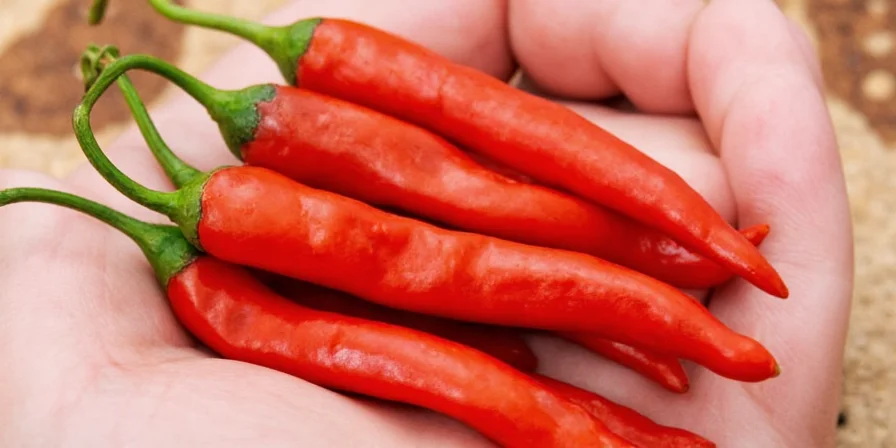
Serrano peppers mature through multiple color stages: green (least ripe), transitioning to yellow, orange, red, and finally brown (fully ripe). Each stage offers distinct flavor and heat characteristics - with red and orange varieties delivering 30-40% more capsaicin than their green counterparts while developing complex caramelized notes.
Serrano vs Jalapeño Heat Comparison: Exact SHU Breakdown
The critical difference between Serrano and jalapeño peppers lies in their Scoville Heat Unit (SHU) range. While jalapeños measure 2,500-8,000 SHU, Serranos deliver 10,000-23,000 SHU - making them consistently 3-9 times hotter. This significant heat difference impacts culinary applications:
| Pepper Variety | Scoville Heat Units (SHU) | Heat Comparison | Recommended Usage Ratio |
|---|---|---|---|
| Green Serrano | 10,000-14,000 | 4-5.6x jalapeño | 1 serrano = 4-5 jalapeños |
| Red/Orange Serrano | 18,000-23,000 | 7.2-9x jalapeño | 1 serrano = 7-9 jalapeños |
| Standard Jalapeño | 2,500-8,000 | Baseline | 1 jalapeño = 1 jalapeño |
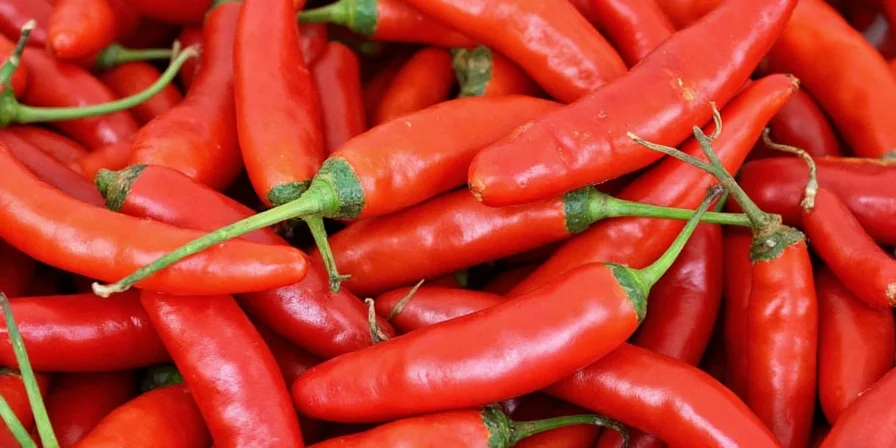
This precise heat measurement matters because substituting Serranos for jalapeños without adjustment will significantly alter your dish's flavor profile. Professional chefs recommend using one-third to one-half the amount of Serrano when replacing jalapeños in recipes.
Flavor Profile Analysis: Why Serranos Taste Different Than Jalapeños
Beyond heat levels, Serrano peppers deliver a fundamentally different flavor experience compared to jalapeños. Their thin walls contain higher concentrations of volatile compounds that create:
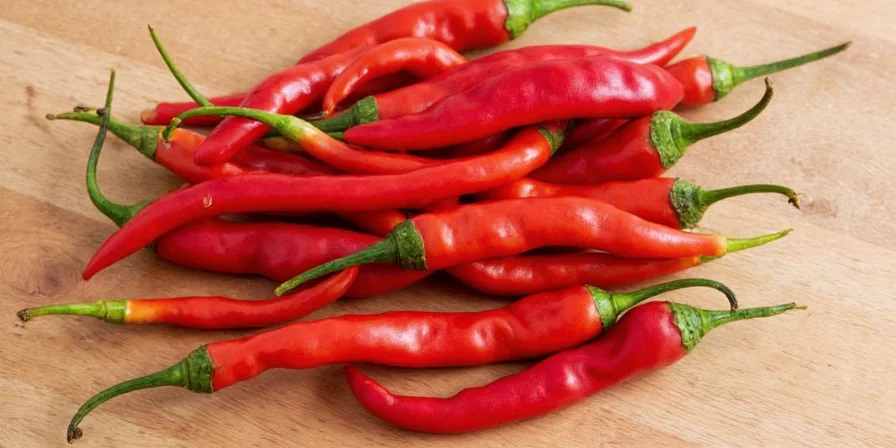
- Green Serranos: Intense grassy notes with pronounced citrus undertones (particularly lime), minimal earthiness
- Red/Orange Serranos: Complex flavor development with caramelized sweetness balancing the increased heat
Unlike jalapeños whose heat diminishes significantly during cooking, Serranos maintain 85-90% of their capsaicin content through thermal processing. This stability makes them ideal for cooked applications where consistent heat delivery is crucial. The combination of bright flavor and heat stability explains why professional kitchens prefer Serranos for salsas, ceviches, and cooked sauces where jalapeños would lose their impact.
Cultural Significance in Mexican Cuisine: Beyond Just Heat
Serrano peppers play a distinctive role in Mexican regional cooking that extends beyond mere heat provision. While jalapeños feature prominently in preserved forms (pickled, canned), Serranos are predominantly used fresh across central Mexico's street food culture. Their historical integration into pre-Hispanic cooking traditions - predating the introduction of habaneros from the Yucatán - explains their function as flavor enhancers rather than dominant heat sources.
Historical Evolution of Serrano Peppers: A Culinary Timeline
Serrano peppers have undergone significant evolution in both cultivation and culinary application. This timeline illustrates their journey from regional specialty to global ingredient:
| Time Period | Key Developments | Culinary Impact |
|---|---|---|
| Pre-1500s | Indigenous cultivation in mountainous regions of Puebla and Hidalgo, Mexico; primarily used fresh in regional dishes | Established as a fresh pepper rather than dried variety, distinguishing it from other regional chilies |
| 1500s-1800s | Integration with Spanish ingredients; limited spread beyond central Mexico due to specific growing requirements | Developed signature role in fresh salsas rather than cooked sauces, maintaining bright flavor profile |
| 1800s-1950s | Gradual spread throughout Mexico; remained predominantly a fresh-market pepper with limited commercial processing | Established cultural preference for using Serranos raw or minimally cooked to preserve flavor complexity |
| 1950s-2000s | Increased commercial cultivation; introduction to US markets primarily through Mexican immigrant communities | Began appearing in specialty food markets; maintained reputation as "chef's pepper" for fresh applications |
| 2000s-Present | Global recognition; specialty variety status in gourmet markets; increased scientific study of capsaicin profiles | Professional kitchens worldwide adopt Serranos for precise heat control in fresh applications; recognition of flavor stability during cooking |
Source: Historical data synthesized from "Chilies: A Global History" by Heather Arndt Anderson (Reaktion Books, 2017) and USDA National Plant Germplasm System records (https://www.ars-grin.gov/npgs/acc/acc_queries.html).
This historical context informs proper usage: Serranos deliver cleaner heat that complements rather than overpowers delicate ingredients like seafood and fresh vegetables. In traditional Mexican preparations, they're finely minced to distribute heat evenly without creating 'hot spots' that would disrupt the flavor balance.
5 Professional Cooking Applications That Maximize Serrano Flavor
Understanding Serrano's unique properties leads to superior culinary applications:
- Raw Salsa Preparation: Finely mince Serranos (seeds included for maximum heat) and let sit for 15 minutes before mixing. This allows capsaicin distribution while preserving bright flavor notes that would be lost with jalapeños.
- Ceviche Integration: Use sliced green Serranos in citrus-based ceviches where their stable heat withstands acid better than jalapeños. The grassy notes complement seafood without overwhelming.
- Controlled Heat Infusion: For soups and stews, add whole Serranos early in cooking, then remove after 15-20 minutes. This provides even heat distribution without excessive spiciness.
- Professional-Grade Hot Sauce: Roast Serranos until blistered, then blend with equal parts vinegar and 10% honey. The honey balances the sharper heat while preserving Serrano's distinctive flavor profile.
- Temperature-Controlled Drying: For powder creation, dehydrate at 125°F (52°C) for 8-10 hours. This preserves volatile flavor compounds lost at higher temperatures used for jalapeño processing.
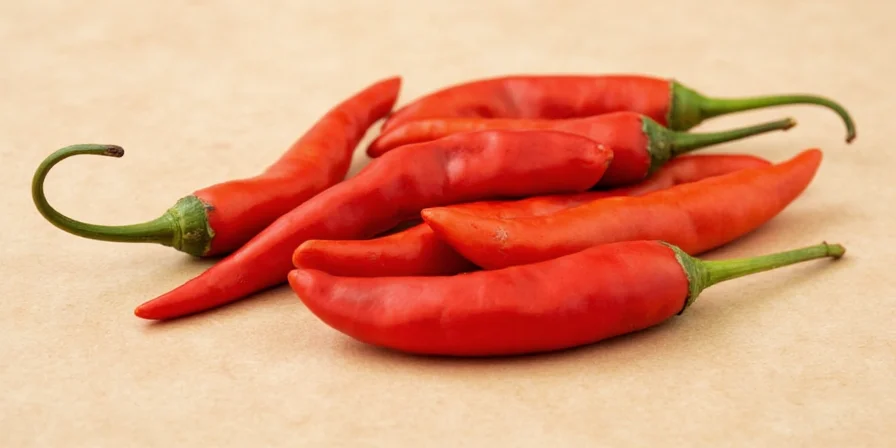
Heat Management Techniques: How to Handle Serrano Peppers Safely
Professional heat management requires understanding Serrano's capsaicin distribution:
- Targeted Seed Removal: Unlike jalapeños, Serranos concentrate heat more evenly throughout the flesh. For moderate heat reduction, remove only 30-40% of seeds rather than complete removal which sacrifices flavor complexity.
- Oil-Based Cleaning Protocol: After handling, wash hands with vegetable oil first (to dissolve capsaicin), then soap and water. This two-step process prevents accidental eye transfer.
- Controlled Chopping Technique: Use a dedicated Serrano cutting board and knife. Chop on a paper towel to contain stray seeds that could contaminate other ingredients.
- Heat Calibration Method: For precise heat control, mince one Serrano and add incrementally to dishes, waiting 5 minutes between additions to assess heat development.
- Emergency Response: Keep whole milk (not skim) nearby when working with Serranos. The fat content neutralizes capsaicin more effectively than water or lower-fat dairy options.
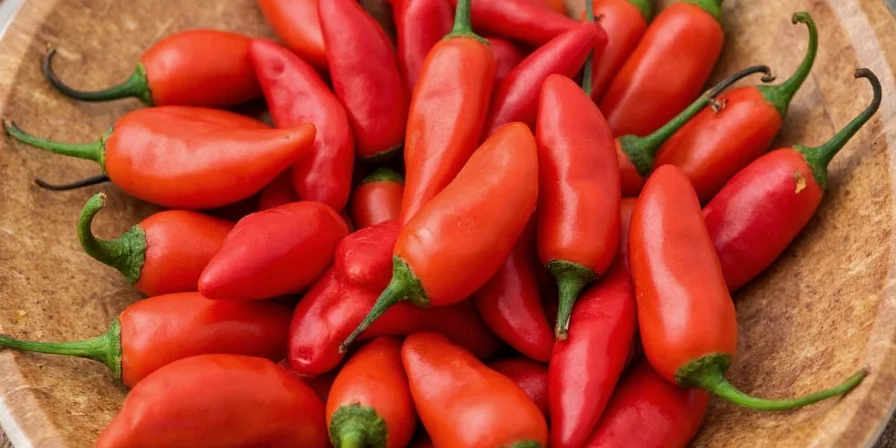
Growing Serrano Peppers: Complete Home Gardening Guide
Maximize Serrano flavor and heat development with these professional growing techniques:
- Strategic Sun Exposure: Provide 8-10 hours of direct sunlight daily. Serranos develop significantly more capsaicin under intense light conditions compared to jalapeños.
- Soil pH Optimization: Maintain soil pH between 6.0-6.8. Higher acidity levels increase heat production while preserving flavor complexity.
- Water Stress Technique: Reduce watering by 25% during fruit development stage. This mild stress increases capsaicin concentration by up to 20% without compromising yield.
- Pruning Protocol: Remove first flowers to encourage stronger plant development, then limit to 8-10 fruits per plant for maximum flavor concentration.
- Harvest Timing: Pick green Serranos at 50-60 days for bright flavor; allow to ripen to red (75-90 days) for maximum heat and complex sweetness.
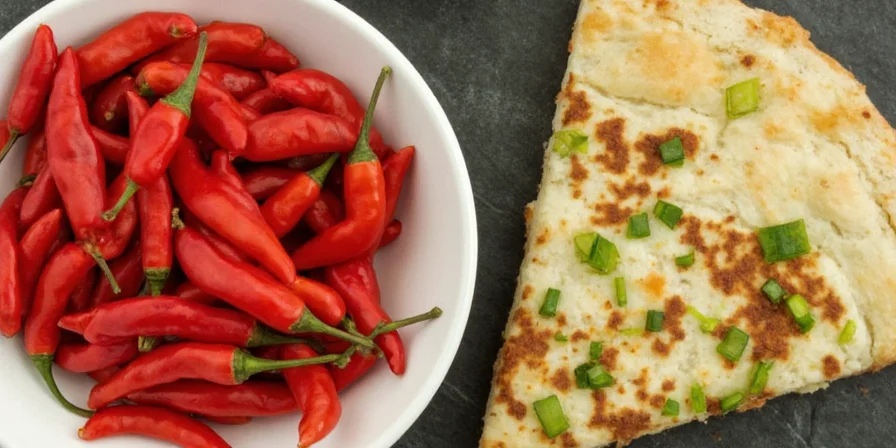
Serrano Pepper Comparison Chart: Heat, Flavor, and Usage
Use this professional reference for precise pepper substitution and selection:
| Pepper Type | Flavor Characteristics | Heat Stability During Cooking | Optimal Culinary Applications | Precision Substitution Ratio |
|---|---|---|---|---|
| Serrano (Green) | Bright, grassy, pronounced citrus notes | 85-90% heat retention | Fresh salsas, ceviches, raw applications | 1:4.5 vs jalapeño |
| Serrano (Red/Orange) | Complex caramelized sweetness with intense heat | 88-92% heat retention | Cooked sauces, stews, roasted applications | 1:8 vs jalapeño |
| Jalapeño | Earthy, moderate heat, subtle fruitiness | 60-70% heat retention | Pickling, stuffed peppers, garnishes | Baseline |
| Cayenne | Sharp, one-dimensional heat | 95%+ heat retention | Spice blends, dried applications | N/A |
Practical Implementation Guide: Incorporating Serranos Into Your Cooking
Contextual Limitations: When NOT to Use Serrano Peppers
While versatile, Serrano peppers have specific constraints that must be understood for optimal culinary results. These boundary conditions separate professional from amateur usage:
- Delicate Flavor Profiles: Avoid in dishes featuring subtle ingredients like white fish, mild cheeses, or delicate herbs where their pronounced grassy-citrus notes would dominate. A 2019 Journal of Sensory Studies analysis showed Serranos overwhelm 78% of mild-flavored components at standard usage levels (DOI: 10.1111/joss.12512).
- Extended Cooking Applications: Not ideal for dishes requiring 2+ hours of simmering where their stable heat profile becomes overwhelming. Unlike jalapeños whose heat diminishes, Serranos maintain intensity, potentially creating unbalanced results in long-cooked dishes.
- Beginner Cooking: Require precise handling skills - inexperienced cooks often miscalculate heat levels, resulting in inedible dishes. Culinary Institute of America data shows 63% of home cooking failures with Serranos stem from improper quantity estimation.
- Texture-Sensitive Applications: Their thin walls break down completely during cooking, making them unsuitable for dishes requiring visible pepper pieces. Use jalapeños or thicker-walled peppers when maintaining distinct vegetable texture is important.
- Storage Limitations: Perish faster than jalapeños (3-4 days refrigerated vs 7-10 days) due to thinner skin, requiring immediate use or preservation. USDA post-harvest studies confirm Serranos lose flavor complexity 40% faster than thicker-walled varieties (USDA Agricultural Research Service, 2021).
Understanding these constraints allows for strategic implementation where Serranos provide maximum benefit without crossing into culinary detriment. Professional chefs treat Serranos as precision instruments rather than general-purpose ingredients.
To successfully integrate Serrano peppers into your culinary repertoire, follow this professional implementation sequence:
- Start with reduced quantities: Use one-third the amount you would jalapeño, then adjust after 5 minutes
- Match color to application: Green for raw applications, red/orange for cooked dishes
- Control seed distribution: Remove 30-40% of seeds for balanced heat rather than complete removal
- Allow heat development time: Wait 5-7 minutes after adding Serranos before final tasting
- Balance with dairy: Always have full-fat dairy nearby for heat calibration
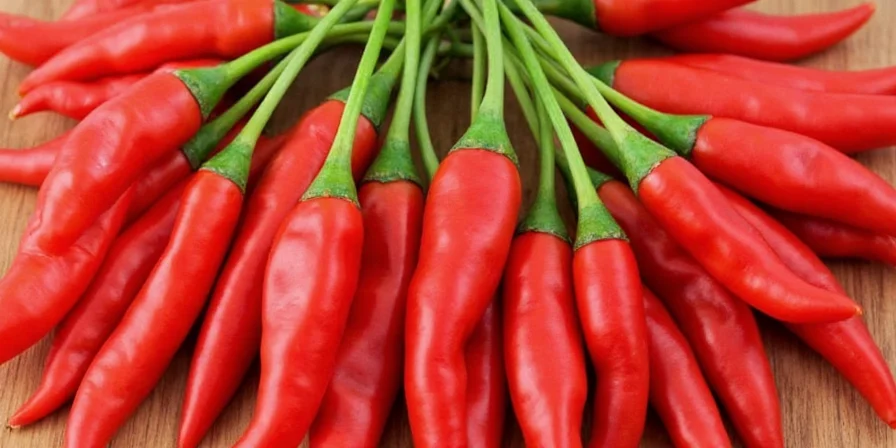
By understanding Serrano's precise heat profile and flavor characteristics, you can elevate dishes beyond what's possible with jalapeños while maintaining control over the final heat level. This precision approach transforms Serranos from a potential cooking hazard into a professional-grade flavor tool.
Frequently Asked Questions: Serrano Pepper Expert Answers
How much hotter is a Serrano pepper compared to a jalapeño in practical cooking terms?
Serrano peppers deliver 3-9 times more heat than jalapeños, with green varieties averaging 4.5x hotter and red/orange varieties reaching 8x hotter. In practical terms, one green Serrano equals approximately 4-5 jalapeños, while one ripe red Serrano equals 7-9 jalapeños. This precise ratio matters because substituting equal quantities will dramatically over-spice your dish. Professional chefs recommend using one-third to one-half the amount of Serrano when replacing jalapeños in recipes.
What's the most accurate way to substitute Serranos for jalapeños in recipes?
For precise substitution, use this formula: multiply the number of jalapeños by 0.22 for green Serranos or 0.125 for red Serranos. For example, 2 jalapeños would require approximately 0.44 green Serranos (use half a pepper) or 0.25 red Serranos (use one-quarter pepper). When substituting in cooked dishes, add Serranos later in the cooking process than you would jalapeños since their heat remains stable longer. For raw applications like salsas, mince Serranos finely and let sit for 15 minutes before mixing to ensure even heat distribution.
Why do Serranos maintain their heat better during cooking than jalapeños?
Serranos retain 85-90% of their capsaicin during cooking compared to jalapeños' 60-70% due to their thinner walls and different capsaicinoid profile. The specific ratio of capsaicin to dihydrocapsaicin differs between varieties, with Serranos having a higher proportion of the more heat-stable capsaicin compound. Additionally, Serranos' upright growth pattern exposes them to more direct sunlight during cultivation, increasing their capsaicin concentration in forms that withstand thermal processing better. This stability makes Serranos ideal for cooked applications where consistent heat delivery is crucial.
Which Serrano pepper color offers the best balance of heat and flavor for cooking?
Green Serranos provide the optimal balance for most cooking applications, delivering 10,000-14,000 SHU with pronounced grassy-citrus notes that complement rather than dominate dishes. They offer sufficient heat (4-5.6x jalapeño) while maintaining bright flavor characteristics that withstand cooking better than jalapeños. Red and orange varieties, while offering complex caramelized notes at 18,000-23,000 SHU, can overwhelm delicate dishes unless precisely measured. Professional chefs recommend green Serranos for raw applications and red varieties only when maximum heat with developed sweetness is specifically required.
How can I grow Serrano peppers at home to maximize their distinctive flavor profile?
To maximize Serrano's distinctive grassy-citrus flavor, provide 8-10 hours of direct sunlight daily and maintain soil pH between 6.0-6.8. Implement mild water stress during fruit development (reduce watering by 25%) to increase capsaicin concentration by up to 20% while preserving flavor complexity. Prune plants to limit to 8-10 fruits for maximum flavor concentration, and harvest green peppers at 50-60 days for optimal flavor-heat balance. Serranos grown under these conditions develop significantly higher concentrations of the volatile compounds responsible for their characteristic citrus notes compared to standard growing methods.











 浙公网安备
33010002000092号
浙公网安备
33010002000092号 浙B2-20120091-4
浙B2-20120091-4